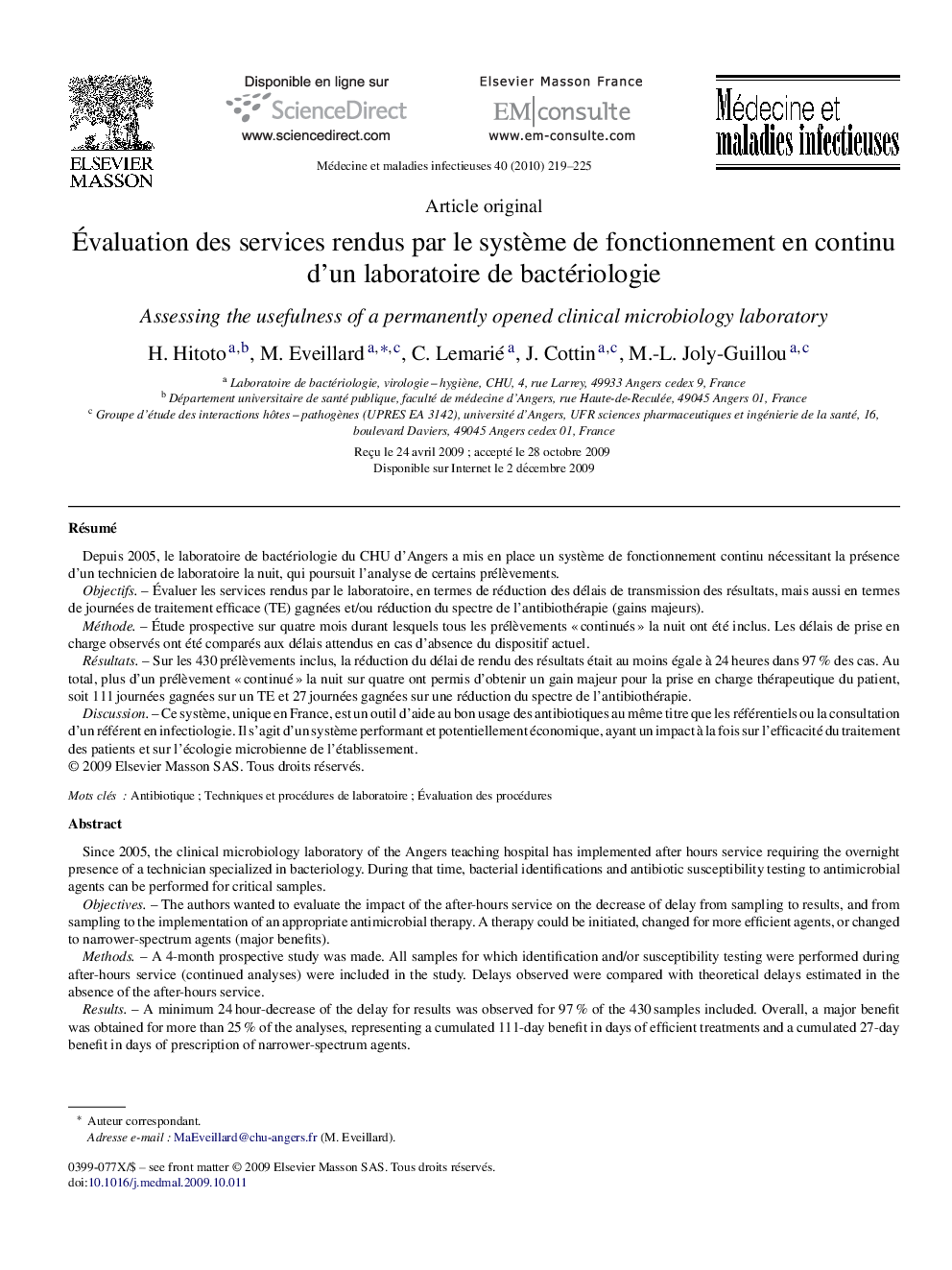| Article ID | Journal | Published Year | Pages | File Type |
|---|---|---|---|---|
| 3413466 | Médecine et Maladies Infectieuses | 2010 | 7 Pages |
RésuméDepuis 2005, le laboratoire de bactériologie du CHU d’Angers a mis en place un système de fonctionnement continu nécessitant la présence d’un technicien de laboratoire la nuit, qui poursuit l’analyse de certains prélèvements.ObjectifsÉvaluer les services rendus par le laboratoire, en termes de réduction des délais de transmission des résultats, mais aussi en termes de journées de traitement efficace (TE) gagnées et/ou réduction du spectre de l’antibiothérapie (gains majeurs).MéthodeÉtude prospective sur quatre mois durant lesquels tous les prélèvements « continués » la nuit ont été inclus. Les délais de prise en charge observés ont été comparés aux délais attendus en cas d’absence du dispositif actuel.RésultatsSur les 430 prélèvements inclus, la réduction du délai de rendu des résultats était au moins égale à 24 heures dans 97 % des cas. Au total, plus d’un prélèvement « continué » la nuit sur quatre ont permis d’obtenir un gain majeur pour la prise en charge thérapeutique du patient, soit 111 journées gagnées sur un TE et 27 journées gagnées sur une réduction du spectre de l’antibiothérapie.DiscussionCe système, unique en France, est un outil d’aide au bon usage des antibiotiques au même titre que les référentiels ou la consultation d’un référent en infectiologie. Il s’agit d’un système performant et potentiellement économique, ayant un impact à la fois sur l’efficacité du traitement des patients et sur l’écologie microbienne de l’établissement.
Since 2005, the clinical microbiology laboratory of the Angers teaching hospital has implemented after hours service requiring the overnight presence of a technician specialized in bacteriology. During that time, bacterial identifications and antibiotic susceptibility testing to antimicrobial agents can be performed for critical samples.ObjectivesThe authors wanted to evaluate the impact of the after-hours service on the decrease of delay from sampling to results, and from sampling to the implementation of an appropriate antimicrobial therapy. A therapy could be initiated, changed for more efficient agents, or changed to narrower-spectrum agents (major benefits).MethodsA 4-month prospective study was made. All samples for which identification and/or susceptibility testing were performed during after-hours service (continued analyses) were included in the study. Delays observed were compared with theoretical delays estimated in the absence of the after-hours service.ResultsA minimum 24 hour-decrease of the delay for results was observed for 97 % of the 430 samples included. Overall, a major benefit was obtained for more than 25 % of the analyses, representing a cumulated 111-day benefit in days of efficient treatments and a cumulated 27-day benefit in days of prescription of narrower-spectrum agents.DiscussionThis organization, unique in French hospitals, is directly related to the improvement of antimicrobial treatments, like antibiotic practice guidelines or infection disease specialists. It was evaluated as a relevant strategy, potentially cost saving, with a significant impact on both the efficiency of treatments and microbial ecology.
